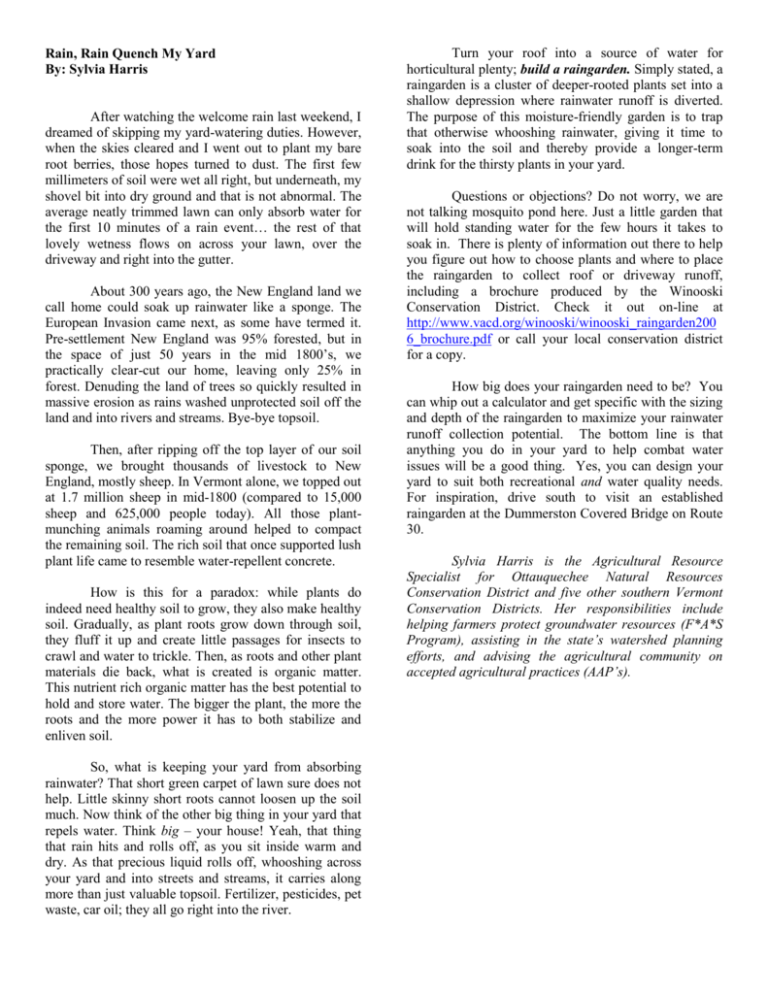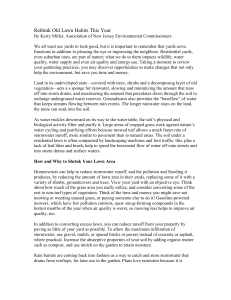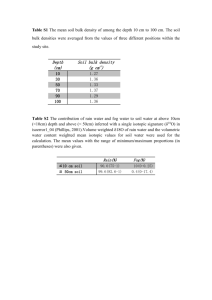Rain Gardens
advertisement

Rain, Rain Quench My Yard By: Sylvia Harris After watching the welcome rain last weekend, I dreamed of skipping my yard-watering duties. However, when the skies cleared and I went out to plant my bare root berries, those hopes turned to dust. The first few millimeters of soil were wet all right, but underneath, my shovel bit into dry ground and that is not abnormal. The average neatly trimmed lawn can only absorb water for the first 10 minutes of a rain event… the rest of that lovely wetness flows on across your lawn, over the driveway and right into the gutter. About 300 years ago, the New England land we call home could soak up rainwater like a sponge. The European Invasion came next, as some have termed it. Pre-settlement New England was 95% forested, but in the space of just 50 years in the mid 1800’s, we practically clear-cut our home, leaving only 25% in forest. Denuding the land of trees so quickly resulted in massive erosion as rains washed unprotected soil off the land and into rivers and streams. Bye-bye topsoil. Then, after ripping off the top layer of our soil sponge, we brought thousands of livestock to New England, mostly sheep. In Vermont alone, we topped out at 1.7 million sheep in mid-1800 (compared to 15,000 sheep and 625,000 people today). All those plantmunching animals roaming around helped to compact the remaining soil. The rich soil that once supported lush plant life came to resemble water-repellent concrete. How is this for a paradox: while plants do indeed need healthy soil to grow, they also make healthy soil. Gradually, as plant roots grow down through soil, they fluff it up and create little passages for insects to crawl and water to trickle. Then, as roots and other plant materials die back, what is created is organic matter. This nutrient rich organic matter has the best potential to hold and store water. The bigger the plant, the more the roots and the more power it has to both stabilize and enliven soil. So, what is keeping your yard from absorbing rainwater? That short green carpet of lawn sure does not help. Little skinny short roots cannot loosen up the soil much. Now think of the other big thing in your yard that repels water. Think big – your house! Yeah, that thing that rain hits and rolls off, as you sit inside warm and dry. As that precious liquid rolls off, whooshing across your yard and into streets and streams, it carries along more than just valuable topsoil. Fertilizer, pesticides, pet waste, car oil; they all go right into the river. Turn your roof into a source of water for horticultural plenty; build a raingarden. Simply stated, a raingarden is a cluster of deeper-rooted plants set into a shallow depression where rainwater runoff is diverted. The purpose of this moisture-friendly garden is to trap that otherwise whooshing rainwater, giving it time to soak into the soil and thereby provide a longer-term drink for the thirsty plants in your yard. Questions or objections? Do not worry, we are not talking mosquito pond here. Just a little garden that will hold standing water for the few hours it takes to soak in. There is plenty of information out there to help you figure out how to choose plants and where to place the raingarden to collect roof or driveway runoff, including a brochure produced by the Winooski Conservation District. Check it out on-line at http://www.vacd.org/winooski/winooski_raingarden200 6_brochure.pdf or call your local conservation district for a copy. How big does your raingarden need to be? You can whip out a calculator and get specific with the sizing and depth of the raingarden to maximize your rainwater runoff collection potential. The bottom line is that anything you do in your yard to help combat water issues will be a good thing. Yes, you can design your yard to suit both recreational and water quality needs. For inspiration, drive south to visit an established raingarden at the Dummerston Covered Bridge on Route 30. Sylvia Harris is the Agricultural Resource Specialist for Ottauquechee Natural Resources Conservation District and five other southern Vermont Conservation Districts. Her responsibilities include helping farmers protect groundwater resources (F*A*S Program), assisting in the state’s watershed planning efforts, and advising the agricultural community on accepted agricultural practices (AAP’s).








